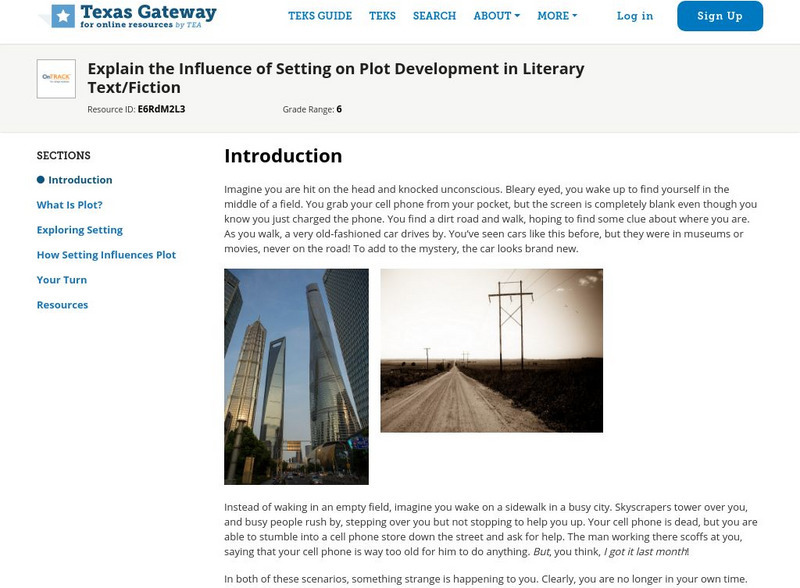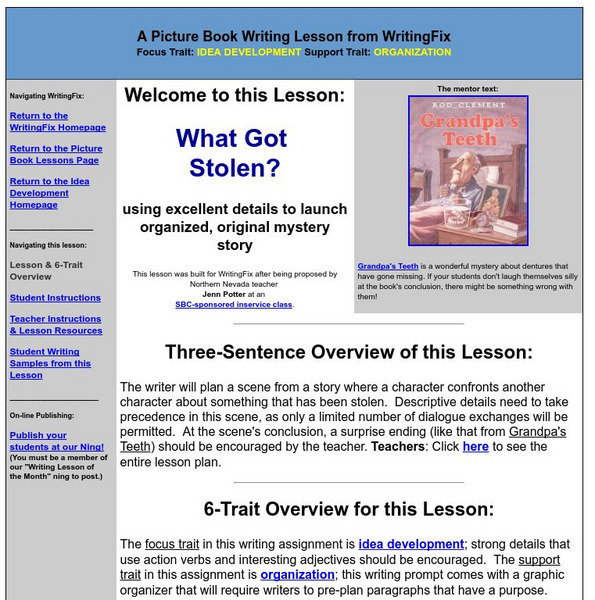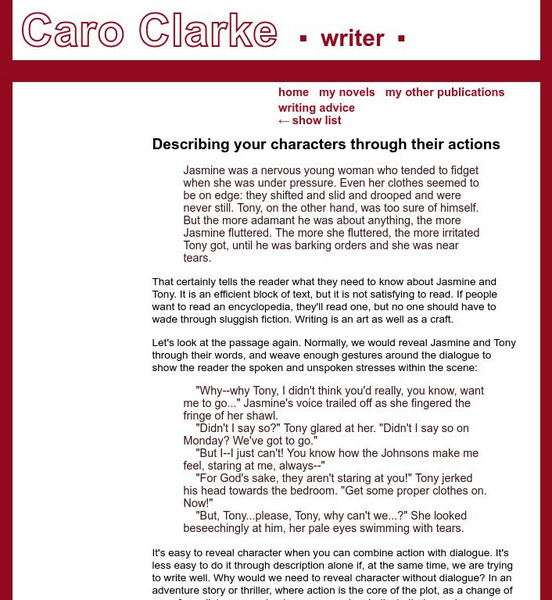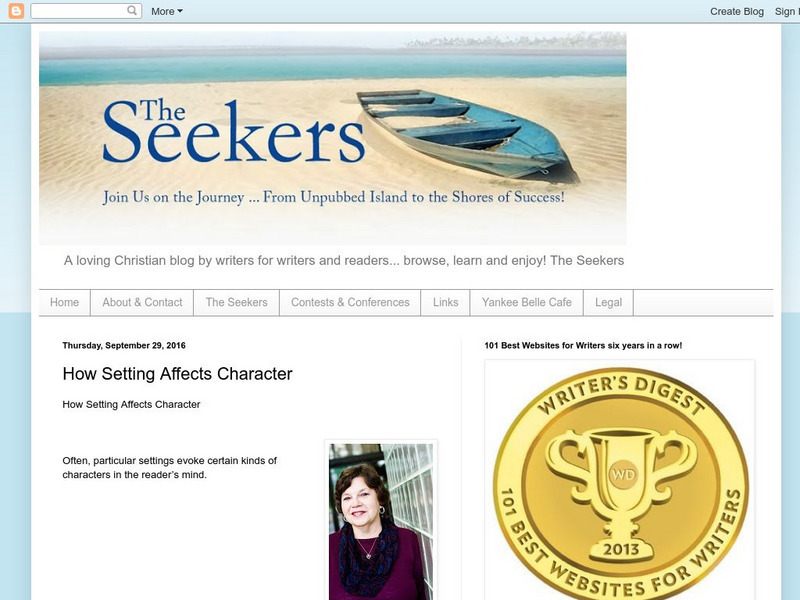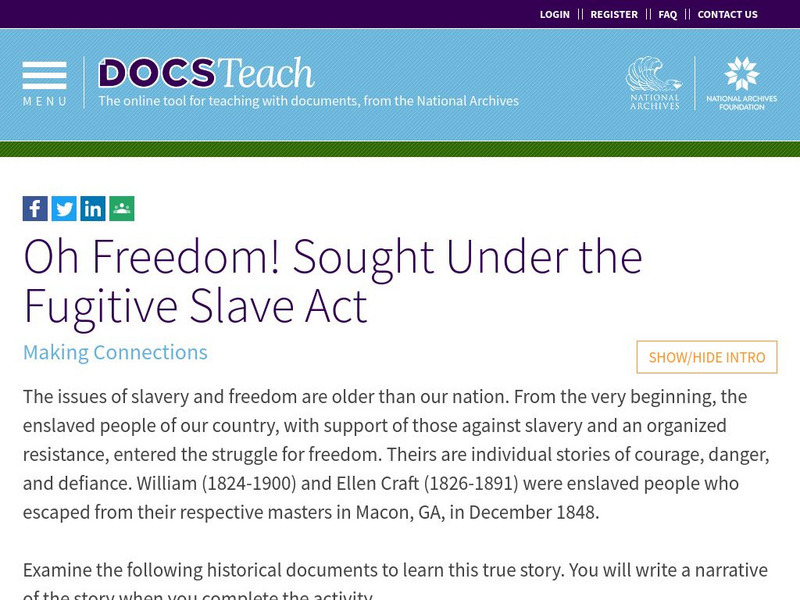Tom Richey
Slide Share: Elements of Plot
A slide show with ten slides about the parts of a plot development: exposition, conflict, rising action, climax, falling action, and resolution.
Texas Education Agency
Texas Gateway: Analyze Development of Plot Through Characters in Literary Text
[Accessible by TX Educators. Free Registration/Login Required] Often characters are a driving force behind the plot. In this lesson, students will learn how complex, multilayered characters contribute to the development of a story's plot...
Quia
Quia: The Elements of Plot
Complete each definition by typing the plot element into the correct box in this ten-question quiz.
Texas Education Agency
Texas Gateway: Explain Influence of Setting on Plot Development in Literary Text
In this lesson, students will review two elements of fiction, setting and plot, and learn how the setting influences the plot in stories.
HotChalk
Hot Chalk: Lesson Plans Page: Elements of a Story
This resource provides a lesson plan to teach students about the elements of a story.
Annenberg Foundation
Annenberg Learner: Literature: Constructing Plot
This site has an explanation of the elements of a plot with clear examples. Click on "What goes into plot" for more information.
Department of Defense
Do Dea: In the Beginning
This expansive self-guided unit hits on many objectives such as analyzing literature for author's purpose, figuring out the main idea/theme, understanding historical criticism, comparing and contrasting works from major historical...
Caro Clarke
Not Stopping the Reader: How to Avoid Stumbling Blocks
This is the eighth article in a series that focuses on helping the new novel author. This article looks at how the author can avoid creating stumbling blocks that disrupt the flow of the novel.
Sophia Learning
Sophia: Denouement
Notes introducing denouement and providing plot diagrams and examples of denouement in three classical texts: Alice's Adventures in Wonderland by Lewis Carroll, "Metamorphosis" by Franz Kafka, and "The Duchess and the Jeweler" by...
Caro Clarke
Caro Clarke: Pacing Anxiety, or How to Stop Padding and Plot!
This is the seventh installment of a series giving advice to the author who is new to writing novels. This article focuses on how to take your characters and use them and their conflicts to develop the plot of your story. W.9-10.3b...
Writing Fix
Writing Fix: What Got Stolen?
After reading Grandpa's Teeth by Rod Clement, the writer will plan a scene from a story where a character confronts another character about something that has been stolen. Descriptive details need to take precedence in this scene, as...
Caro Clarke
Describing Your Characters Through Their Actions
This is the tenth in a series of articles designed to help the new novel author. This article focuses on how to develop characters through their actions instead of simply relying on dialogue and description of thoughts. W.11-12.3d...
ReadWriteThink
Read Write Think: Narrative Pyramid
A printable narrative pyramid where students can record information about a story including the character, setting, problem, main events, and solution. Directions on how to use this type of graphic organize as well as lists of teaching...
Other
Seekers Blog Spot: How Setting Affects Characters
Information and examples of different ways the setting of a text can affect the characters and character development. (Published: Sept. 29, 2016)
US National Archives
Docsteach: Oh Freedom! Sought Under the Fugitive Slave Act
This activity includes primary sources from the official records of the U.S. District Court at Boston that tell the story of William and Ellen Craft, a young couple from Macon, GA, who escaped to freedom in Boston in 1848. Students will...
Caro Clarke
Historical Fiction: Who Rules?
This is the fifteenth article in a series designed to help the new novel author. This article focuses on the genre of historical fiction and the role of the author. Is the author a researcher or a story-teller?
Caro Clarke
Explaining Too Much: Why More Is Less
This is the eleventh article in a series that is designed to help the new novel author. This article focuses on how to eliminate needless information in your novel. The key is to not explain too much about the action.
Other popular searches
- Teaching Elements of Plot
- Structural Elements of Plot
- 5 Elements of Plot
- Elements of Plot Movie
- Elements of Plot Quiz
- The Elements of Plot
- Elements of Plot Lessons
- Elements of Plot Theme



